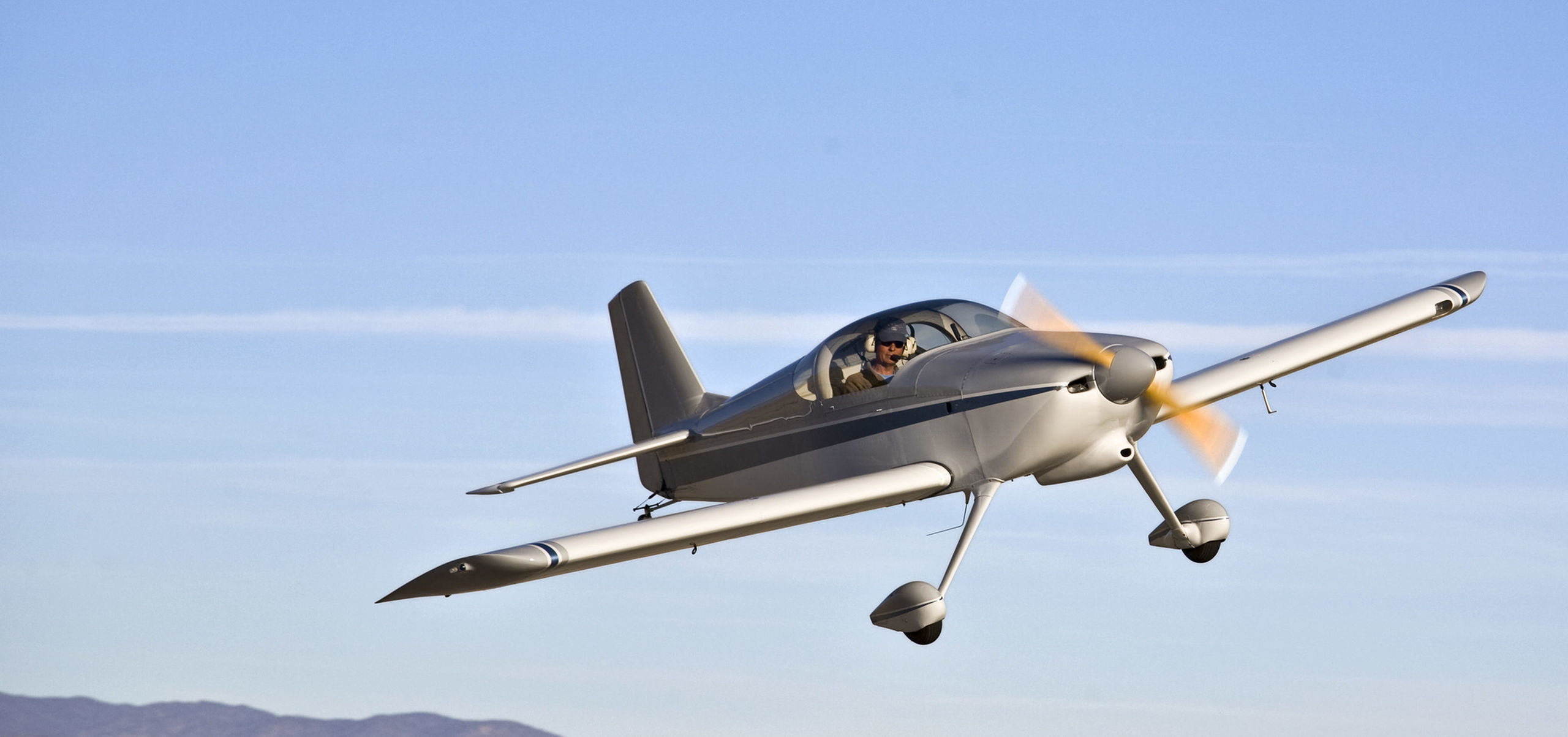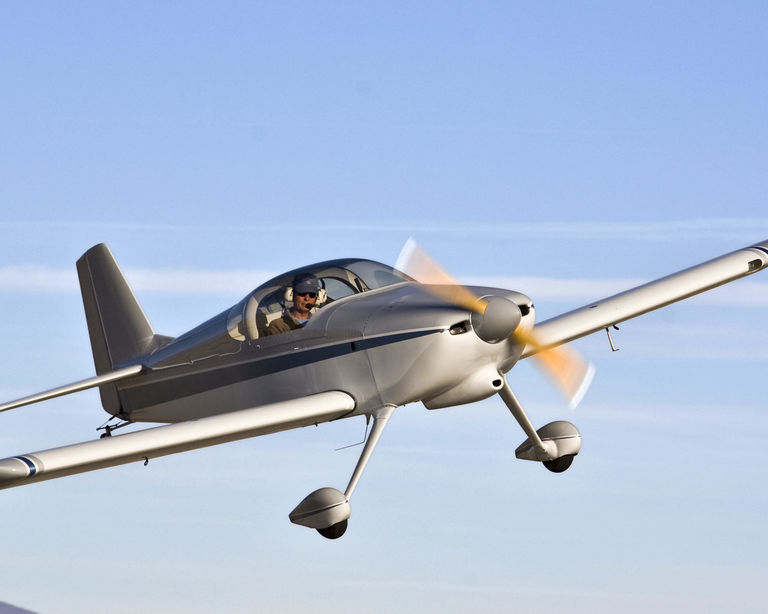Turbine on RV?
There was a bit of discussion about turbine engines on an RV on the Vans Air Force forum recently. Here's our response.
This post will be a little long so you might want to grab a coffee before you settle in to read.
There are a lot of excellent discussion points raised in the posts above and I'd like to take this opportunity to address some of them. This first response will be of a generic nature, and I will then endeavor to respond to the individual posts where I think a response would add value or clarity to the discussion.
I need to start by making it very clear that the Talon is still under development. We have completed the design of the prototype and are currently having components sourced/manufactured for that prototype engine. All figures that we have or are putting out there are predictions only at this stage. It will not be until we have run the engine and have obtained verifiable data that we will be able to publish actual performance data.
Our performance or specification predictions are based on the design work and analyses that our engineering team has carried out, using industry standard software that is proven to be extremely accurate. Our turbomachinery, combustor, fuel delivery, rotor and bearing systems are fairly conventional so their performance can be predicted with a high degree of accuracy. Our recuperator component has added a measure of complexity to designing a well-balanced system, but again, there is software that can fairly accurately predict heat exchange technology performance. The technical challenge with our recuperator is to get the performance that we would like in a small package, that doesn’t cost an arm and a leg, and to be actually able to build it.
Another generic statement that I would like to make in relation to discussion around our engine is that there is a lot of knowledge but also misunderstanding out there about turbine technology. Also, generalities have been made that do not apply to specific circumstances, technologies or products. When discussing this technology, I would encourage participants in this forum to be open to learning new stuff and be prepared, through education, to be open to considering changes to preconceived ideas or “prior knowledge”.
With that now said, let me address some of the points that have been raised.
The first point is that power is power. 200hp is 200hp regardless of whether it is from a piston engine or a turbine engine. For the same power on the same airframe, the performance will be identical.
However, there are several factors to be considered that could influence aircraft performance:
- A Talon installation will likely allow the use of a more aerodynamically efficient engine cowling that should result in less drag for the airframe. What this means is that for an identical power setting, the turbine RV with the cleaner cowling would fly faster than the piston RV. Alternatively, for an identical speed, the turbine RV would use less power.
- The Talon should offer 200hp for take-off at sea level, a maximum power of 187hp at 10,000’ and a maximum power of 147hp at 20,000’, whereas the IO-360 M1B quoted in Post #1 offers a maximum power of 180hp at sea level, a maximum power of 128hp at 10,000’ and a maximum power of 86hp at 20,000’ (from Figure 3-26 of the Operators Manual). Maximum power available will limit the performance of the aircraft (take-off, climb and cruise). Because the Talon is flat-rated to around 8,000’, it will have a power advantage over most of the naturally aspirated IO-360 variants at altitudes above 5,000’. If you have a high elevation or high density altitude home airport, the Talon’s performance should be a positive.
Switching to the topic of fuel consumption, any individual considering a powerplant needs to determine what their most common mission profile is, or if not the most common mission profile, at least the most limiting mission profile that they will fly.
You need to define the mission before doing an analytical comparison of fuel consumptions. Once you have defined the mission and set the parameters for doing the comparison (power required and altitude being key factors), then be careful to compare apples to apples. Specific Fuel Consumption comparisons are not valid when comparing a JetA burning aircraft to an Avgas burning aircraft due to the different densities of the fuel (JetA being around 10% more dense than Avgas). What this means is that a turbine that has a SFC of say .55 lbs/hp/hr will actually be burning the same volume of fuel per hour as a piston that has a SFC 0f 0.50 lbs/hp/hr. Since we buy fuel by the gallon and the tanks hold a set number of gallons, volume of fuel is most important to us (except where weight limits are more critical than volume limits).
A secondary but other important factor is the cost differential between JetA and Avgas. In many parts of the US. JetA is around 10-20% cheaper than Avgas. Meaning that the turbine can burn 10-20% more fuel before the fuel cost for the piston becomes cheaper. In parts of Europe, the cost differential between JetA and Avgas is much higher, so the fuel cost equation is more in favor of the turbine in Europe than for the piston.
I will give one example of a comparison:
The aircraft concerned is an RVxx and this owner’s typical mission is a 3 hour flight, going as fast as he can to minimize his time in transit. Let’s assume the piston engine fitted is the IO-360 M1B.
I’m going to make several assumptions about the power required to achieve the maximum speed the owner of this example aircraft is comfortable to cruise at. I will also use the fuel prices from around the time of writing this article (Avgas - $5.89 per gallon; JetA - $4.99 per gallon)
Sea-level comparison:
Assumption – The aircraft requires 150hp to cruise at its maximum cruise speed (TAS).
Piston – Burns 9.2gph at $5.89 per gallon = $54.20 of fuel per hour (Figure 3.6 from the Operators Manual)
Turbine – Burns 14.5gph at $4.99 per gallon = $72.40 of fuel per hour
Over the 3 hour flight, the turbine burns 15.9 gallons of fuel more than the piston and the fuel cost is $54 more for the turbine.
10,000’ comparison:
Assumption – The aircraft still requires 150hp to cruise at its maximum cruise speed (TAS).
Piston – (cannot offer 150hp at 10,000’ but at it’s maximum power of 128hp, it will be burning 11.0gph at $5.89 per gallon = $64.80 of fuel per hour (Figure 3.6 from the Operators Manual – Max power curve because 128hp is maximum power available at 10,000’)
Turbine – Burns 12.7gph at $4.99 per gallon = $63.40 of fuel per hour
Over the 3 hour flight, the turbine burns 5.1 gallons of fuel more than the piston but the fuel cost is $4 less for the turbine, but also remember that the turbine is operating at 22hp higher than the piston so the aircraft will be cruising faster, making the flight shorter. This makes the economics even better for the turbine as far as fuel cost is concerned and actually means that there may be very little differential in the amount of fuel used for this flight.
20,000’ comparison
Assumption – The aircraft requires 120hp to cruise at its maximum cruise speed (TAS).
Piston – cannot offer 120hp at 20,000’ but at its maximum power of 89hp, it will be burning 8.7gph at full throttle (Figure 3.6 from the Operators Manual) @ $5.89 per gallon = $51.20
Turbine – Burns 9.0gph at $4.99 per gallon = $44.90 of fuel per hour
Over the 3 hour flight, the turbine burns 1 gallon more fuel than the piston but the fuel cost is $18.90 less for the turbine and the turbine is offering 31hp more than the piston so cruise speed will be much better for the turbine, offering way better fuel economics (better range when cruise speeds are considered, less fuel cost).
Conclusion:
What the above example demonstrates is that under certain scenarios, the piston offers better range (less fuel burn) and a lower fuel cost. However, for a different scenario, the turbine can offer more range (less fuel burn) and a lower fuel cost.
So, from a basic range and fuel cost perspective, the typical mission of the aircraft is important to determine whether a piston or a turbine makes sense for you.
So that is fuel considerations covered.
Now there are weight, size, reliability, scheduled maintenance requirements, TBO, customer support (spare parts, access to maintainers, participation in a pro-active Health and Usage Monitoring system program etc.), coolness, sound, smoothness of engine, cost to purchase, cost of overhaul, cost of inspections, single lever control and simplicity of operation (safety), automatic engine protection systems (safety and simplicity for pilot), and a myriad of other factors/features that need to be considered.
Once we have run our engine and thoroughly tested it, we will have the data that you need to make an educated and valid comparison of engine options. When it comes to that time, I encourage anyone considering the buy decision to take the time to define their mission profiles, determine what the key factors are that they need from their engine and then do a valid apples to apples comparison between the options.
The good news is that while the turbine will not be the solution for some or even many, at least it will be an option. It’s always better to have choice than no choice.
Dave Limmer,
Founder, TurbAero.
We'd love to hear your feedback about this topic. You can join our discussion on our forum using the button below.


